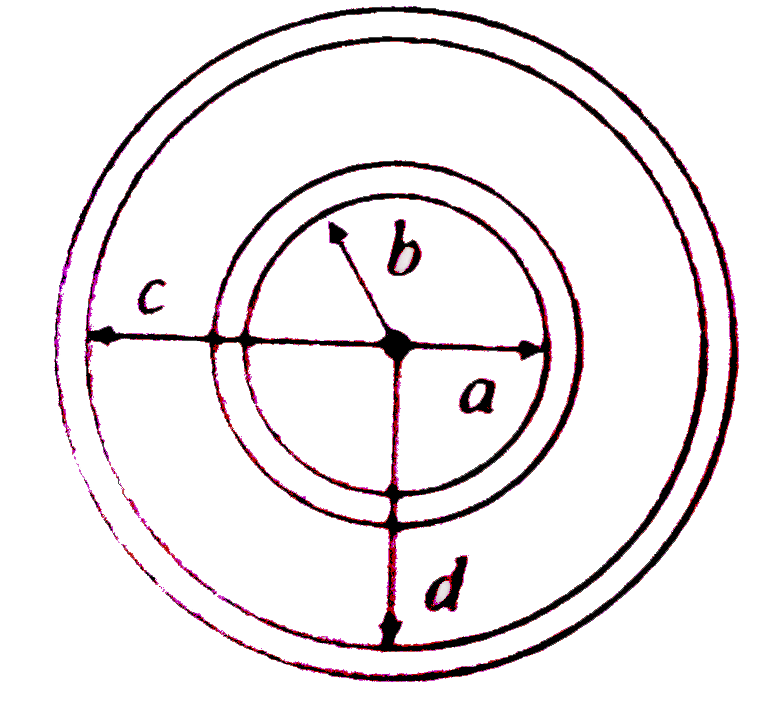In cells of endothecium, a cellulosic fibrous bands arise from
(a) Outer radial wall
(b) Inner tangential wall
(c) Outer tangential wall
(d) Both on inner and outer tangential walls
Outer radial wall
Inner tangential wall
Outer tangential wall
Both on inner and outer tangential walls
The correct Answer is:B
To solve the question regarding the origin of cellulosic fibrous bands in the cells of endothecium, we can follow these steps:
1. Understanding Endothecium:
- The endothecium is a layer of cells located beneath the epidermis of the anther in flowering plants. It plays a crucial role during the development of pollen grains.
Hint: Remember that the endothecium is part of the anther structure.
2. Identifying Cell Structure:
- The cells of the endothecium are elongated and have specific structural features that contribute to their function.
Hint: Focus on the characteristics of the endothecium cells.
3. Fibrous Thickening Composition:
- The fibrous bands that arise in these cells are primarily made up of alpha cellulose, along with traces of pectin and lignin.
Hint: Consider what materials make up the fibrous thickenings.
4. Location of Fibrous Bands:
- The question asks where these cellulosic fibrous bands arise from. According to the information, these thickenings develop from the inner tangential wall of the endothecium cells.
Hint: Pay attention to the specific walls of the cells mentioned in the options.
5. Choosing the Correct Option:
- Based on the understanding that the fibrous thickenings arise from the inner tangential wall, the correct answer is option (b) inner tangential wall.
Hint: Verify which option corresponds to the inner tangential wall.
Final Answer:
(b) Inner tangential wall
- The endothecium is a layer of cells located beneath the epidermis of the anther in flowering plants. It plays a crucial role during the development of pollen grains.
- The cells of the endothecium are elongated and have specific structural features that contribute to their function.
- The fibrous bands that arise in these cells are primarily made up of alpha cellulose, along with traces of pectin and lignin.
- The question asks where these cellulosic fibrous bands arise from. According to the information, these thickenings develop from the inner tangential wall of the endothecium cells.
- Based on the understanding that the fibrous thickenings arise from the inner tangential wall, the correct answer is option (b) inner tangential wall.
(b) Inner tangential wall
Topper's Solved these Questions
Similar Questions
Assertion : Endothecium layer of anther wall plays an important role in dehiscence of anther Reason : The presence of fibrous bands and defferential expansion of inner and outer tangential walls of endothecial cells cause dehiscence of anther.
View SolutionCorrect sequence of uterine wall outer to inner side?
View SolutionFibrous bands develop in the cells of anther wall layer known as
View SolutionIn the wall of alimentry canal which is/are is true sequence from outer to inner
View SolutionIn the cell walls of the gurad cells cellulose microfibrils are oriented (A) _____ rather than (B)____making stomata easier to open.
View SolutionA small conducting spherical shell with inner radius a and outer radius b is concentric with a larger conducting spherical shell with inner radius c and outer radius d. The inner shell has total charge +2q and the outer shell has charge +4q.
(i) What is the total charge on the (a) inner surface of the small shell, (b) outer surface of the small shell (c) inner surface of the large shell, (d) outer surface of the large shell ?
(ii) Calculate the electric field in terms of q and the the distance r from the common centre of two shells for (a) r<a, (b) a<r<b, (c) b<r<c, (d) c<r<d, (e) r>d

View SolutionA small conducting spherical shell with inner radius a and outer radius b is concentric with a larger conducting spherical shell with inner radius c and outer radius d. The inner shell has total charge +2q, and the outer shell has charge +4q. (K=(1)/(4piepsilon_(0)))

Find the electric field in terms of q and the distance r from the common centre of the two shells for (i) b<r<c (ii) c<r<d
View SolutionA small conducting spherical shell with inner radius a and outer radius b is concentric with a larger conducting sphereical shell with inner radius c and outer radius d. The inner shell has total charge +2q and the outer shell has charge +4q.
a. Make a plot of the magnitude of the electric field versus r.
b. Calculate the electric field (magnitude and direction in terms of q) and the distance r from the common centre of the two shell for (i)r<a,(ii)a<r<b,(iii)bltrltc,(iv)cltrltd,(v)rgtd.Showuourrest–∈agraphwithradialcompo≠ntofvecEasfunctionofr.
c. What is the total charge on the
i. inner surface of the small shell,
ii. outer surface of the small shell,
iii. inner surface of the large shell,
iv. outer surface of the large shell?
View SolutionA small conducting spherical shell with inner radius a and outer radius b is concentric with a larger conducting spherical shell with inner radius c and outer radius d. The inner shell has total charge +2q, and the outer shell has charge +4q. (K=(1)/(4piepsilon_(0)))

Find the electric in terms of q and the distance r from the common centre of the two shells for r>d.
View SolutionWhich cells secretes wax located at the outer surface of body wall ?
View Solution